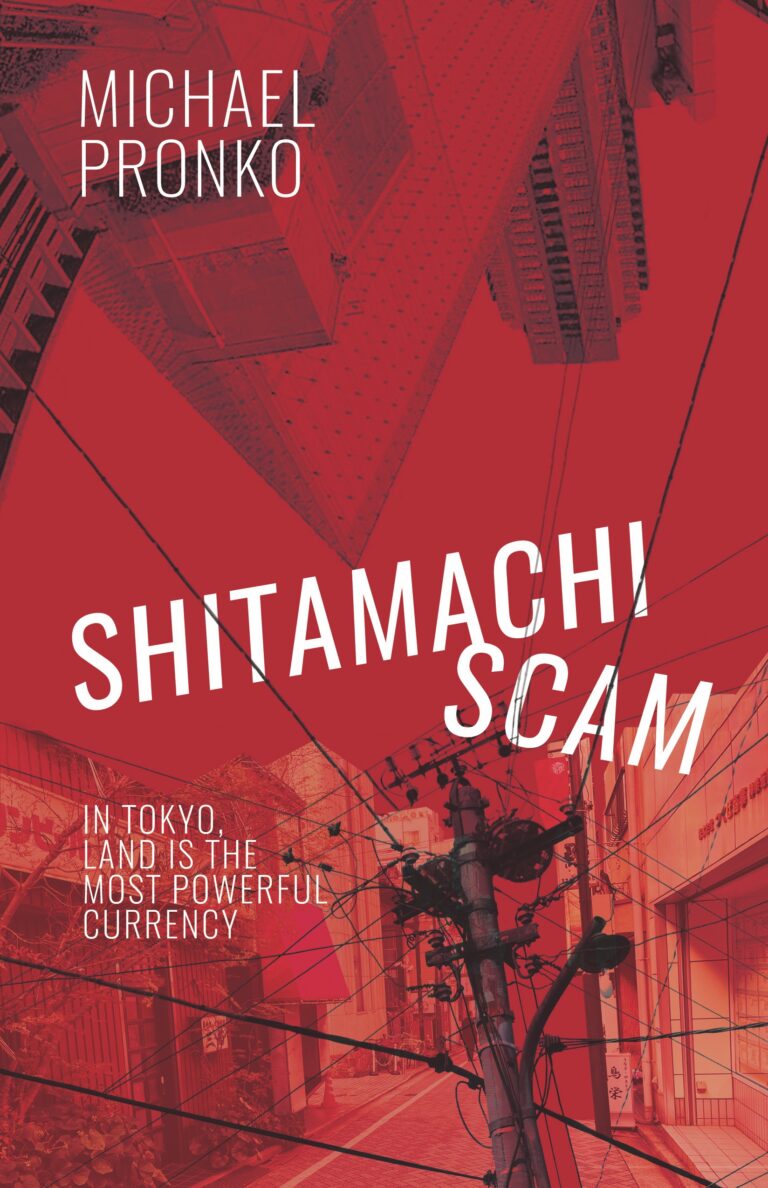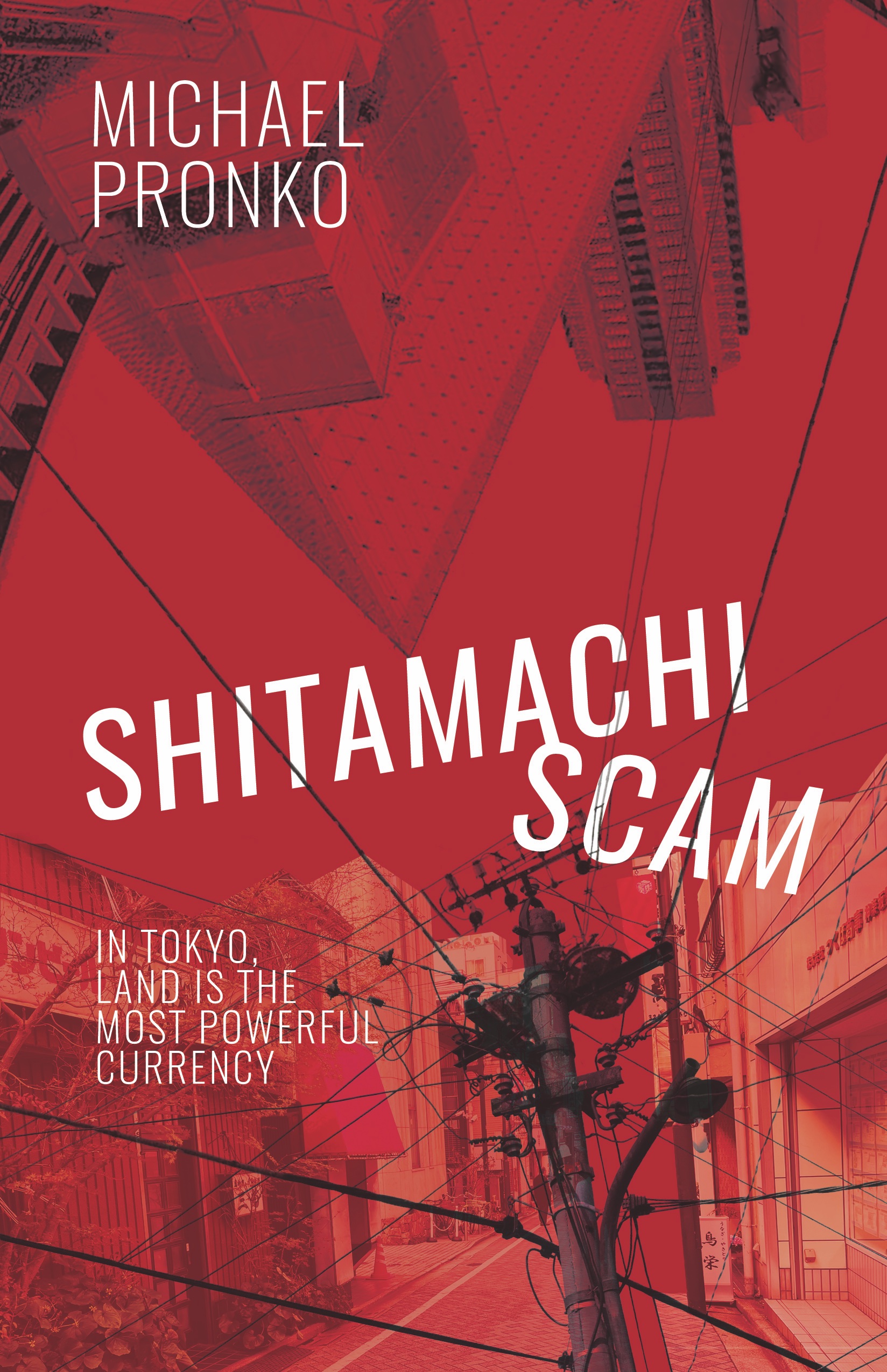SHITAMACHI SCAM is the sixth novel in Michael Pronko’s Detective Hiroshi series, offering an excellent sales pitch for both the previous five titles and the presumed seventh. Pronko embeds exposition, setting, tone, backstories, characters, and cultural information into action scenes and dialogue, leaving little for the reader to do but enjoy the tale.
The book’s title refers to its setting—Shitamachi, an older section in a low-lying area in Tokyo alongside and east of the Sumida River—as well as a police investigation. Scammers have been targeting older women who have often outlived their loved ones. The criminals pretend to be distant relatives, staying vague about specifics until they can learn if there is a close family member actively caring for these potential targets. If not, the scammers ingratiate themselves, eventually stealing these women’s pensions, retirement accounts, and deeds to their homes.
The story opens during a sting operation: Hiroshi, the protagonist, and his colleagues pursue a character we soon learn is among the scam artists. But a random scooter accident sabotages the job and severely injures Ueno, the older woman who had been willing to serve as bait to get back at those who conducted such fraudulence. Both the cops conducting the carefully planned sting and the young men attempting to carry out the scam are disappointed with the fluke interruption. Or was it a fluke? As the mystery unfolds, seemingly unrelated clues—chief among them the death of a student in the same community—appear to be connected. But how exactly remains frustratingly oblique.
Pursuing the case are forensics expert Hiroshi, Detective Takamatsu, and Chief Sakaguchi. Throughout the story, Hiroshi struggles with this case, and, by extension, his career. His girlfriend is pregnant, so he is questioning his line of work and its long hours now that he is on the cusp of fatherhood. Also on the team is Detective Ishii, a female cop new to the force, who fiercely defends a pilot task force focused on crimes against older women that she managed to push through on a trial basis. The sting was part of that project.
Setsuko, a resident of a facility housing both elder women and young students, explains the valuable role Ueno played in her work for the facility: “At first, we set up a food bank, but no one would use it. But when Ueno called it osusowake, it was like sharing, not like charity. It was what family or neighbors always did in Japan, share a box of potatoes or a big bag of rice. Calling it the same as a traditional custom let people take something they need without shame.”
An appealing aspect of the novel is its portrait of the scammers, which includes backstories that invite compassion. One of their grandmothers is dying, and his peers are sympathetic—extending him latitude and understanding at his frequent long absences at the hospital with her during a job. Readers may even find themselves rooting almost as much for them as they do for Hiroshi and his team.
But that team is also very appealing. These people are eminently likeable: funny, vulnerable, irritable, rule-followers, and rule-breakers. As the story reveals more and more about each of the characters—victims as well as victimizers and police officers—fascinating social and cultural elements come into play.
Some of these elements are large, like the changing roles of the elderly in Japan’s culture, as their once-venerated status shifts in the face of a younger generation seeking faster, less traditional lives. Others are detailed, like descriptions of typical Japanese lunch fare that might not be familiar to non-Japanese people: “The waitress returned with a big round plate of motsuyaki, grilled skewers of intestine, liver, heart, and stomach.” This cafe scene also offers up entertaining cop talk, characteristics and conflicts, and details about the mystery itself—all in a crisp page and a half.
Although the tone of SHITAMACHI SCAM is often subdued, almost sorrowful, it serves up humor as well—from joshing among the cops to a hilarious scene that borders on slapstick, centering around staff efforts to buffer the incessant sounds of jackhammers on the property they occupy: a maddening side effect of a city that is constantly building. The novel’s craftmanship also shows itself in the satisfying climax and resolution, as the eventual revelation of the mystery is both unexpected and inevitable.
Also, a handy appendix lists characters for easy referral. It’s a nice extra, but mostly unneeded because of Pronko’s ability to paint his multidimensional people so succinctly.
Author Michael Pronko is a master craftsman, painting a fascinating portrait of a city and its underbelly through engaging characters and depictions of crime that are more gray than black-and-white in SHITAMACHI SCAM..
~Anne Welsbacher for IndieReader


